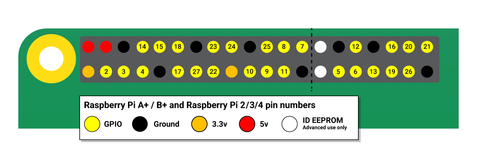We stock a wide range of different Raspberry Pi HATs, from motor controllers to LCD touchscreens, there's one for every project but what actually makes them a Raspberry Pi HAT? HAT stands for Hardware Attached on Top, it’s a term used to describe add-on boards for the Raspberry Pi 3, 4 and Zero models that usually sit on top of the Raspberry Pi board. These boards are compatible with the Raspberry Pi as they share the same 40-pin GPIO pinout, meaning the pins are in the same places. They also support a special autoconfiguration system that allows automatic driver and GPIO setup when connected. This ensures better compatibility and an easier user experience for less technical users when any boards labelled HATs. You can read the full official Raspberry Pi HAT specification here.

What is the difference between a Raspberry Pi HAT and pHAT?
As well as standard Raspberry Pi HATs you may also come across Raspberry Pi pHATs or Bonnets, so what's the difference between them? A Raspberry Pi pHAT is usually smaller and the same size as the Raspberry Pi Zero. The other main difference is that a pHAT does not usually use the autoconfiguration system which means it doesn't meet the physical and electrical specifications to be called a HAT.

They both share the same GPIO pinout and are therefore interchangable. You can use a phAT with a Raspberry Pi 4 and you could also use a HAT with a Raspberry Pi Zero. The downside is that the positions of the mounting/fixing holes may not be in the correct positions and you may have to perform a little more setup to get a pHAT to work.

